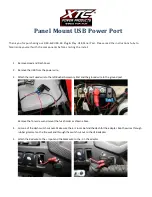
How to Check
Because this operation can be a little difficult, you may
choose to have this done at the dealership service
department.
If you do it yourself, be sure to follow all the instructions
here, or you could get a false reading on the dipstick.
Notice: Too much or too little fluid can damage the
transaxle. Too much can mean that some of the
fluid could come out and fall on hot engine or
exhaust system parts, starting a fire. Too little fluid
could cause the transaxle to overheat. Be sure
to get an accurate reading if you check the
transaxle fluid.
Wait at least 30 minutes before checking the transaxle
fluid level if you have been driving:
•
When outside temperatures are above 90°F (32°C).
•
At high speed for quite a while.
•
In heavy traffic – especially in hot weather.
•
While pulling a trailer.
To get the right reading, the fluid should be at normal
operating temperature, which is 180° F to 200° F
(82° C to 93° C).
Get the vehicle warmed up by driving about 15 miles
(24 km) when outside temperatures are above
50° F (10° C). If it is colder than 50°F (10°C), you may
have to drive longer.
Checking the Fluid Level
Prepare your vehicle as follows:
•
Park your vehicle on a level place. Keep the engine
running.
•
With the parking brake applied, place the shift lever
in PARK (P).
•
With your foot on the brake pedal, move the shift
lever through each gear range, pausing for about
three seconds in each range. Then, position the shift
lever in PARK (P).
•
Let the engine run at idle for three to five minutes.
5-21
Summary of Contents for 2004 Seville
Page 5: ...These are some examples of symbols you may find on your vehicle v...
Page 6: ...NOTES vi...
Page 13: ...Put someone on it Get it up to speed Then stop the vehicle The rider doesn t stop 1 7...
Page 58: ...NOTES 1 52...
Page 112: ...NOTES 2 54...
Page 115: ...NOTES 3 3...
Page 116: ...Instrument Panel Overview 3 4...
Page 216: ...NOTES 3 104...
Page 272: ...Engine Compartment Overview When you open the hood you will see 5 12...
Page 394: ...NOTES 7 14...
















































